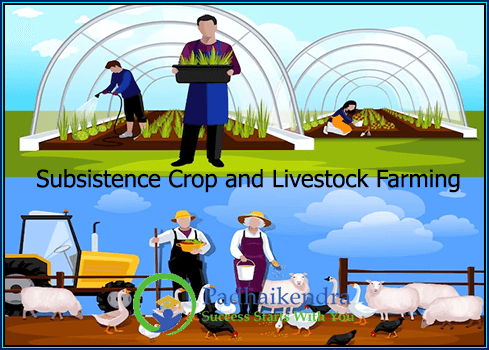Subsistence crop and livestock farming is a type of agriculture in which farmers grow crops and raise livestock primarily to feed themselves and their families, with any excess produce being sold or traded in local markets. This type of farming is common in rural areas of developing countries, where access to modern agricultural inputs such as fertilizers, pesticides, and mechanized equipment is limited.
In subsistence crop farming, farmers typically cultivate a variety of crops, including grains, vegetables, fruits, and legumes, using traditional methods such as hand tools and animal-drawn plows. The crops are typically grown for personal consumption, with any surplus being sold or traded for other goods and services.
In subsistence livestock farming, farmers typically raise animals such as cows, goats, sheep, or chickens for meat, milk, and eggs, as well as for draft power, transportation, and manure. Livestock are usually kept in small numbers, and the focus is on sustainability and self-sufficiency, rather than on maximizing productivity.
Subsistence crop and livestock farming can be an effective way for rural communities to provide for their basic needs and maintain traditional farming practices, but it can also be a challenging and risky enterprise, particularly in areas prone to natural disasters or other external shocks. Additionally, as rural areas become more integrated into global markets, subsistence farming may become less viable as a means of livelihood, as farmers may not be able to compete with larger, more efficient agricultural producers.





